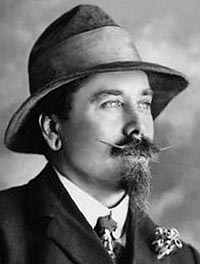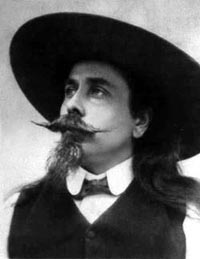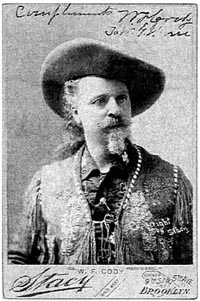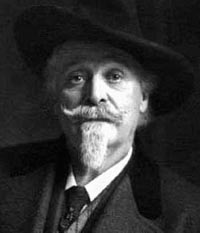
Samuel Franklin Cody (1867-1913)
October 16, 1908, Samuel Franklin Cody makes first powered flight in his British Army Aeroplane No 1. Cody, (b. Franklin Samuel Cowdery), a former cowboy and gold prospector, left the United States to Britain in 1889 to set up a Wild West show. Cody was Chief Kite Instructor to the British Army Balloon Factory at Farnborough (1902-09). In 1902 Samuel's wife, Lela (Leila) Marie, became the first woman to fly, using his 'Man-lifting War Kite'.
In 1908 Cody turned his attention to building a heavier-than-air flying machine. After much work, testing, criticism, and skepticism, he designed and built a large aircraft of wood, metal, fabric, and a fifty-horsepower French engine. On the morning of October 16, 1908, near Farnborough, Cody flew it a quarter mile in what is recognized as the first powered sustained flight in Britain. Image : http://www.meykites.de
His biplane, Cody's Flying Cathedral, was then the largest plane in existence. He taught himself to pilot all of his planes, and he set a world record of forty miles for a cross-country flight, won the British Empire Michelin Cup contest in 1910, and won both the British and International divisions in the military airplane trials in 1913, in spite of the fact that he wrecked the plane he was planning to fly four weeks before the trials. Undaunted, he built a new plane from the parts of former planes. Cody continued flying in spite of many accidents, always aware of the dangers and risks involved. In August 1913 his Cathedral VI broke up in the air and crashed. More than 50,000 people attended his funeral and burial in the Military Cemetery southeast of London. Known as the father of British aviation, Cody was awarded the silver medal by the Aeronautical Society for his services to aeronautics. His work stimulated public interest in aviation and led to the formation of the Royal Flying Corps and the Royal Naval Air Service. Bibliography: G. A. Broomfield, Pioneer of the Air: The Life and Times of Colonel S.F. Cody; Aldershot, Hampshire: Gale and Polden, 1953 Arthur S. G. Lee, The Flying Cathedral; London: Methuen, 1965
Samuel Franklin Cody As well as being one of the early pioneers of aviation Cody is also remembered as being a flamboyant wild west showman. There is even a high street shop named after him called S.F. Cody. Appropriately this chain of stores sells novel gadgets, toys, gifts and ingenious electrical products. Perhaps this is one of the best ways of honoring such an important figure of the last century. There is even a Cody Society.
"It actively promotes the education of young people in the topic of aerospace and learning about this first man to fly a powered aeroplane in the UK. This objective aims to foster the interest of young people in the aerospace industry and encourage their entry and future careers in this important area of business"Cody was born in the state of Iowa in the United States of America in 1867. Throughout his youth he lived the typical life of a cowboy. He learnt how to ride and train horses, hunt buffalo, shoot and use a lasso. Cody lived until 1913 when he died in an aircrash....more
A History of Aeronautics
XIII. First Fliers in England Following on the success of these kites, Cody constructed an aeroplane which he designated a 'power kite,' which was in reality a biplane that made the first flight in Great Britain. Speaking before the Aeronautical Society in 1908, Cody said that...
'I have accomplished one thing that I hoped for very much, that is, to be the first man to fly in Great Britain.... I made a machine that left the ground the first time out; not high, possibly five or six inches only. I might have gone higher if I wished. I made some five flights in all, and the last flight came to grief.... On the morning of the accident I went out after adjusting my propellers at 8 feet pitch running at 600 (revolutions per minute).This Cody machine was a biplane with about 40 foot span, the wings being about 7 feet in depth with about 8 feet between upper and lower wing surfaces. 'Attached to the extremities of the lower planes are two small horizontal planes or rudders, while a third small vertical plane is fixed over the centre of the upper plane.' The tail-piece and principal rudder were fitted behind the main body of the machine, and a horizontal rudder plane was rigged out in front, on two supporting arms extending from the centre of the machine. The small end-planes and the vertical plane were used in conjunction with the main rudder when turning to right or left, the inner plane being depressed on the turn, and the outer one correspondingly raised, while the vertical plane, working in conjunction, assisted in preserving stability. Two two-bladed propellers were driven by an eight-cylinder 50 horse-power Antoinette motor. With this machine Cody made his first flights over Laffan's plain, being then definitely attached to the Balloon Section of the Royal Engineers as military aviation specialist. There were many months of experiment and trial, after the accident which Cody detailed in the statement given above, and then, on May 14th, 1909, Cody took the air and made a flight of 1,200 yards with entire success. Meanwhile A. V. Roe was experimenting at Lea Marshes with a triplane of rather curious design the pilot having his seat between two sets of three superposed planes, of which the front planes could be tilted and twisted while the machine was in motion. He comes but a little way after Cody in the chronology of early British experimenters, but Cody, a born inventor, must be regarded as the pioneer of the present century so far as Britain is concerned. He was neither engineer nor trained mathematician, but he was a good rule-of-thumb mechanic and a man of pluck and perseverance; he never strove to fly on an imperfect machine, but made alteration after alteration in order to find out what was improvement and what was not, in consequence of which it was said of him that he was 'always satisfied with his alterations.' By July of 1909 he had fitted an 80 horse-power motor to his biplane, and with this he made a flight of over four miles over Laffan's Plain on July 21st. By August he was carrying passengers, the first being Colonel Capper of the R.E. Balloon Section, who flew with Cody for over two miles, and on September 8th, 1909, he made a world's record cross-country flight of over forty miles in sixty-six minutes, taking a course from Laffan's Plain over Farnborough, Rushmoor, and Fleet, and back to Laffan's Plain. He was one of the competitors in the 1909 Doncaster Aviation Meeting, and in 1910 he competed at Wolverhampton, Bournemouth, and Lanark. It was on June 7th, 1910, that he qualified for his brevet, No. 9, on the Cody biplane. He built a machine which embodied all the improvements for which he had gained experience, in 1911, a biplane with a length of 35 feet and span of 43 feet, known as the 'Cody cathedral' on account of its rather cumbrous appearance. With this, in 1911, he won the two Michelin trophies presented in England, completed the Daily Mail circuit of Britain, won the Michelin cross-country prize in 1912 and altogether, by the end of 1912, had covered more than 7,000 miles with the machine. It was fitted with a 120 horse-power Austro-Daimler engine, and was characterised by an exceptionally wide range of speed--the great wingspread gave a slow landing speed. A few of his records may be given: in 1910, flying at Laffan's Plain in his biplane, fitted with a 50-60 horsepower Green engine, on December 31st, he broke the records for distance and time by flying 185 miles, 787 yards, in 4 hours 37 minutes. On October 31st, 1911, he beat this record by flying for 5 hours 15 minutes, in which period he covered 261 miles 810 yards with a 60 horse-power Green engine fitted to his biplane. In 1912, competing in the British War office tests of military aeroplanes, he won the L5,000 offered by the War Office. This was in competition with no less than twenty-five other machines, among which were the since-famous Deperdussin, Bristol, Flanders, and Avro types, as well as the Maurice Farman and Bleriot makes of machine. Cody's remarkable speed range was demonstrated in these trials, the speeds of his machine varying between 72.4 and 48.5 miles per hour. The machine was the only one delivered for the trials by air, and during the three hours' test imposed on all competitors a maximum height of 5,000 feet was reached, the first thousand feet being achieved in three and a half minutes. During the summer of 1913 Cody put his energies into the production of a large hydro-biplane, with which he intended to win the L5,000 prize offered by the Daily Mail to the first aviator to fly round Britain on a waterplane. This machine was fitted with landing gear for its tests, and, while flying it over Laffan's Plain on August 7th, 1913, with Mr W. H. B. Evans as passenger, Cody met with the accident that cost both him and his passenger their lives. Aviation lost a great figure by his death, for his plodding, experimenting, and dogged courage not only won him the fame that came to a few of the pilots of those days, but also advanced the cause of flying very considerably and contributed not a little to the sum of knowledge in regard to design and construction.
Mastery of the Air : Chapter XXXI. The Romance of a Cowboy Aeronaut In the brief but glorious history of pioneer work in aviation, so far as it applies to this country, there is scarcely a more romantic figure to be found than Colonel Cody. It was the writer's pleasure to come into close contact with Cody during the early years of his experimental work with man-lifting box-kites at the Alexandra Park, London, and never will his genial smile and twinkling eye be forgotten. Cody always seemed ready to crack a joke with anyone, and possibly there was no more optimistic man in the whole of Britain. To the boys and girls of Wood Green he was a popular hero. He was usually clad in a "cowboy" hat, red flannel shirt, and buckskin breeches, and his hair hung down to his shoulders. On certain occasions he would give a "Wild West" exhibition at the Alexandra Palace, and one of his most daring tricks with the gun was to shoot a cigarette from a lady's lips. One could see that he was entire master of the rifle, and a trick which always brought rounds of applause was the hitting of a target while standing with his back to it, simply by the aid of a mirror held at the butt of his rifle. But it is of Cody as an aviator and aeroplane constructor that we wish to speak. For some reason or other he was generally the object of ridicule, both in the Press and among the public. Why this should have been so is not quite clear; possibly his quaint attire had something to do with it, and unfriendly critics frequently raised a laugh at his expense over the enormous size of his machines. So large were they that the Cody biplane was laughingly called the "Cody bus" or the "Cody Cathedral." But in the end Cody fought down ridicule and won fame, for in competition with some of the finest machines of the day, piloted by some of our most expert airmen, he won the prize of L5000 offered by the Government in 1912 in connection with the Army trials for aeroplanes. In these trials he astonished everyone by obtaining a speed of over 70 miles an hour in his biplane, which weighed 2600 pounds. In the opening years of the present century Cody spent much time in demonstrations with huge box-kites, and for a time this form of kite was highly popular with boys of North London. In these kites he made over two hundred flights, reaching, on some occasions, an altitude of over 2000 feet. At all times of the day he could have been seen on the slopes of the Palace Hill, hauling these strange-looking, bat-like objects backward and forward in the wind. Reports of his experiments appeared in the Press, but Cody was generally looked upon as a "crank". The War Office, however, saw great possibilities in the kites for scouting purposes in time of war, and they paid Cody L5000 for his invention. It is a rather romantic story of how Cody came to take up experimental work with kites, and it is repeated as it was given by a Mohawk chief to a newspaper representative. "On one occasion when Cody was in a Lancashire town with his Wild West show, his son Leon went into the street with a parrot-shaped kite. Leon was attired in a red shirt, cowboy trousers, and sombrero, and soon a crowd of youngsters in clogs was clattering after him.
"'If a boy can interest a crowd with a little kite, why can't a man interest a whole nation?' thought Cody--and so the idea of man-lifting kites developed."In 1903 Cody made a daring but unsuccessful attempt to cross the Channel in a boat drawn by two kites. Had he succeeded he intended to cross the Atlantic by similar means. Later on, Cody turned his attention to the construction of aeroplanes, but he was seriously handicapped by lack of funds. His machines were built with the most primitive tools, and some of our modern constructors, working in well-equipped "shops", where the machinery is run by electric plant, would marvel at the work accomplished with such tools as those used by Cody. Most of Cody's flights were made on Laffan's Plain, and he took part in the great "Round Britain" race in 1911. It was characteristic of the man that in this race he kept on far in the wake of MM. Beaumont and Vedrines, though he knew that he had not the slightest chance of winning the prize; and, days after the successful pilot had arrived back at Brooklands, Cody's "bus" came to earth in the aerodrome. "It's dogged as does it," he remarked, "and I meant to do the course, even if I took a year over it." Of Cody's sad death at Farnborough, when practising in the ill-fated water-plane which he intended to pilot in the sea flight round Great Britain in 1913, we speak in a later chapter.
Samuel Franklin Cody Should this PDF file not be available, there is also a cached text version on this site, which, in one 'chapter', fully discusses Cody and his flying machines... "...When Cody first came to Aldershot in 1906, he was involved in working on balloons, kites and aeroplanes. One of his first designs was an unmanned glider, powered by a small Buchet engine, which he was frustratingly forced to tether to the ground during experiments. In September 1907 the war airship, Nulli Secundus, was unveiled at Aldershot. After completing two circuits of Farnborough Common at a height of 800 feet, it was immediately hailed a success. Cody's involvement in the ship's design and construction had been crucial. By the end of 1907 Cody had begun plans for his first aeroplane. Code named British Army Aero Plane No. 1, it was a biplane with forty-foot wings, bicycle wheels on the wing tips and a revolutionary buffer wheel. Nulli Secundus II was launched in July 1908 with little success. On the first flight fuel pipes burst and on the second trip a water pipe was badly damaged by strong winds. Cody's 1909 plane became known as 'The Flying Cathedral' because of the French term katahedral referring to the curvature of the biplanes wings The Mk II Cathedral was originally fitted with two engines but these proved to be unsuccessful so Cody used just one engine instead. Cody was constantly reinventing his planes to improve performance and stability. It was this plane which Cody entered in the 1910 Michelin Cup. The Cathedral came to an untimely end when a trainee pilot caused it to crash at Laffan's Plain in December 1911. However, by 1912 Cody had been able to install an Austro-Daimler engine and the Cathedral Mk III was now capable of carrying up to four passengers at a time. During the winter of 1911, Cody began designs for a new plane. This was to be his first attempt at a monoplane. Cody was looking to build a sleeker, faster and more comfortable aircraft. By spring 1912 the monoplane was reaching speeds of eighty miles an hour. Cody had plans for an air ambulance that could be used by the Royal Army Medical Corps. His Cathedral was able to carry a table, doctor, assistant and anaesthetist. The Mk III Cathedral, which was so successful at the Salisbury Plain Military War Trials, July 1912. Cody's final aircraft, the water-plane, had a sixty-foot wingspan. This was the largest he had built. Cody practiced floating the plane on the Basingstoke Canal near Laffan's Plain. The aircraft could also be fitted with wheels in place of the floats.....more
A History of Aeronautics Meanwhile the Government balloon factory at Farnborough began airship construction in 1907; Colonel Capper, R.E., and S. F. Cody were jointly concerned in the production of a semi-rigid. Fifteen thicknesses of goldbeaters' skin--about the most expensive covering obtainable--were used for the envelope, which was 25 feet in diameter. A slight shower of rain in which the airship was caught led to its wreckage, owing to the absorbent quality of the goldbeaters' skin, whereupon Capper and Cody set to work to reproduce the airship and its defects on a larger scale. The first had been named 'Nulli Secundus' and the second was named 'Nulli Secundus II.' Punch very appropriately suggested that the first vessel ought to have been named 'Nulli Primus,' while a possible third should be christened 'Nulli Tertius.' 'Nulli Secundus II.' was fitted with a 100 horse-power engine and had an envelope of 42 feet in diameter, the goldbeaters' skin being covered in fabric and the car being suspended by four bands which encircled the balloon envelope. In October of 1907, 'Nulli Secundus II.' made a trial flight from Farnborough to London and was anchored at the Crystal Palace. The wind sprung up and took the vessel away from its mooring ropes, wrecking it after the one flight.
Further ReadingIn Print
Lee, Arthur S.G., The Flying Cathedral; London: Methuen, 1965
While he is well remembered in the county of Surrey, where he lived and worked, Samuel Franklin Cody is relatively little known in his homeland. Garry Jenkins, a Welsh author, has done his best to change all that by crafting a brisk and definitive biography of the Wild West showman, cattle wrangler, broncobuster, marksman and dramatist from Davenport, Iowa, and Birdville, Texas, the man who helped the British get into the air when they were lagging behind the French and the Americans. Jenkins shows how Cody experimented with man-lifting kites (he reached an altitude of 300 feet with one at Bury St. Edmunds) while touring England with his show, "The Klondyke Nugget," and began an association with the British army. He ensured the success of Britain's first military dirigible, Nulli Secundus, and built the first airplane to fly in England--a huge Gothic-looking biplane dubbed The Flying Cathedral which he piloted at Laffan's Plain, Aldershot, Hampshire, on October 16, 1908....more
Secrets of Britain's first flyer Ninety-one years ago, Britain belatedly entered the age of aviation, thanks to a mystery cowboy whose fraudulent claims about his life have only now come to light, along with the story of how the British establishment tried to stop his pioneering achievements. The flight of British Army Aeroplane No 1 was brief. Just 27 seconds after leaving the ground, having covered a mere 1,390ft, the plane clipped trees and crashed to earth. Yet it marked Britain's inaugural powered flight. The flight established the legend of the aeroplane's charismatic and controversial pilot, the American cowboy, "Colonel" Samuel Franklin Cody. Since arriving in England in the 1890s, Cody had become a popular hero, first as a vaudeville entertainer then as a pioneer aviator and inventor. Yet his life was shrouded in myth and rumour. When he died in an air crash in 1913 he took his secrets to the grave. But over the past decade, War Office records and court files as well as private diaries and letters have seeped into the public domain. The material reveals a life more dramatic than even his admirers imagined....more
Further ReadingOn Line
On August 11 1913, the British garrison town of Aldershot witnessed a most extraordinary spectacle; the funeral of a former cowboy from Iowa who, despite being American and a civilian, was buried with full military honours, escorted to his last resting place by the pipers of the Black Watch and an enormous crowd of mourners. The coffin was taken to the military cemetery on a gun carriage drawn by six black horses. The cortege was a mile long. One hundred thousand people lined the route, many of whom had come from London for the occasion and waited there since dawn. The King himself, George V, had sent the deceased's widow a personal telegram expressing his grief....more
American-born British aviator, born in Texas Samuel Franklin Cody (b. Franklin Samuel Cowdery 1867-1913) came to England in 1890 and acquired British nationality. He experimented with man-lifting kites & participated in the planning and construction of the first British dirigible.He was the first person to fly in Britain and built an early aeroplane & flew for 27 mins in Oct.1908. He was killed in a flying accident at Aldershot.
Among all the pioneers of early aviation, probably the most remarkable was the flamboyant Samuel Franklin Cody. Born in Birdville, Texas, in 1861, (1867 Ed.) he lived the typical prairie life of a cowboy, catching and training wild horses in true bronco-buster style. He was also a highly skilled buffalo hunter, and became an expert with the rifle and lasso. During 1883-4 he was gold prospecting around the junction of the KIondyke and Yukon Rivers,a location which thirteen years later grew into Dawson City, centre of the Alaskan Gold Rush, the biggest gold rush of all time. Cody, however, made no strike, and after a few years spent touring America with a Wild West show, where he was billed as 'Captain Cody, King of the Cowboys', he eventually settled in England in 1890. He soon became a showman, forming his own company of entertainers, giving demonstrations of his exceptional skills in riding, lassoing and shooting. As a professional showman he adopted the extravagant form of dress for which he was to become so famous from his compatriot, namesake and friend. Colonel William Fredrick Cody, alias 'Buffalo Bill' whose hugely successful Wild West show he had seen and admired greatly.
 Champion Cavalier Du Monde Englier, S.F. Cody, c.1895 Admission ticket for the S.F. Cody Wild West Shows being performed in Europe in the late 19c
Apparently, with the help of the coincidence of their names, close physical resemblance, and Cody's affectation of shoulder-length hair, beard, moustache, stetson, fringed buckskins and cowboy boots, Samuel Cody quite deliberately nurtured confusion in the minds of the public, some of them genuinely believing that they were watching 'Buffalo Bill' himself, or at least the son or brother of the famous cowboy....more
The Round Britain Race : Samuel Franklin Cody An immensely popular character was Samuel Cody, an Anglicized American who had been instructed by the British Army to develop an aeroplane for them. He brought his creation, a massive heavy biplane named the Cathedral, to the race and, as usual, endeared himself to all with his colourful 'wild-west' personality, so at odds with his employment by the British establishment. The Cathedral lumbered into the air and headed north at low altitude after Howard Pixton's boxkite.
Samuel Franklin Cody Samuel Franklin Cody, Texan(?), cowboy, Wild West showman, pioneer aviator, a larger than life character, a name inextricably linked with Farnborough Airfield, HM Balloon Factory, RAE, kite flying, the founder of aviation and manned flight within England, and yet paradoxically for such a larger than life character he remains virtually unknown outside of Farnborough where he conducted his exploits. ...more
Cody Lecture : What the Nation should do To Stand First in Aviation
Cody Kite Gallery : A selection of pictures from classic Cody kites
Cody's Basingstoke Canal Encounter
Cody Collection
Cody's Early Boxkites
History of the Bowland Gliding Club
A Samuel Franklin Cody Image Gallery, c.1890 - 1913Early Days
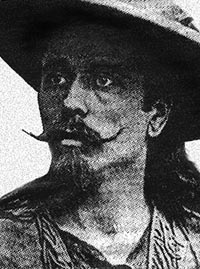 S.F. Cody, c.1890 www.ash-vale.co.uk/ s_cody.html
Boxkites
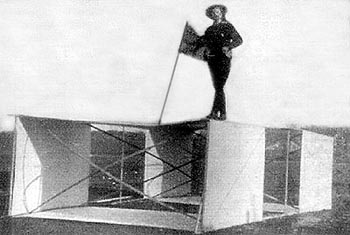 S.F. Cody and 'Hargrave' Boxkite
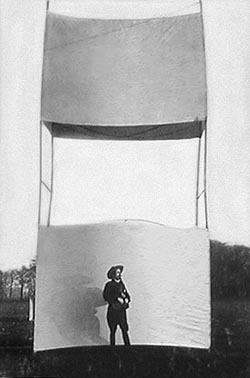 S.F. Cody and 'Hargrave' Boxkite
 Cody 'Hargrave' Boxkite train and winch
 S.F. Cody (l) and assistant with two winged 'boxes'
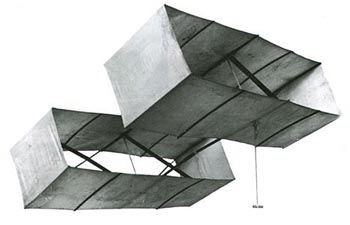 An original Hargrave Boxkite, 1893
Manlifters (Warkites)
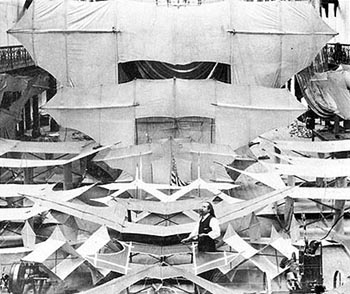 S.F. Cody, and his kites, 1899
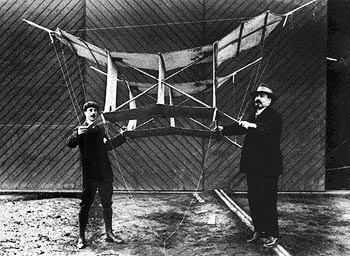 S.F. Cody (r) and assistant with 'Warkite' download a 750pixel image
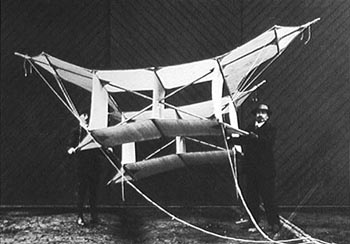 S.F. Cody (r) and assistant with 'Warkite' (alt.)
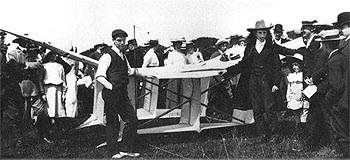 S.F. Cody (r) with 'Warkite'
 S.F. Cody - a modern, replica 'Warkite' download a 1000pixel image
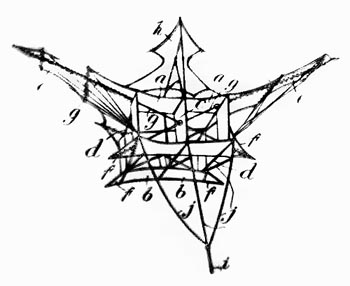 S.F. Cody, 'Warkite' patent, (section) more data to follow
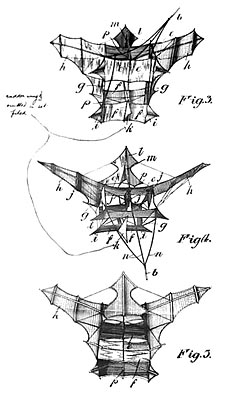 S.F. Cody, 'Warkite' patent, (section) more data to follow download a 500pixel image
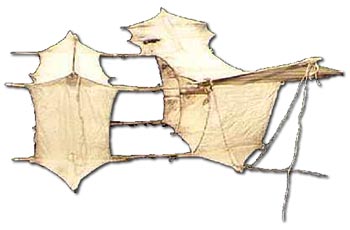 S.F. Cody 'Warkite', a modern day re-examination
 S.F. Cody, (war)kite construction
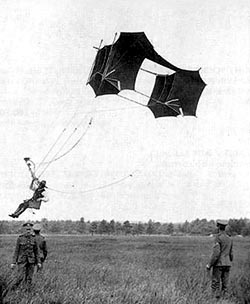 S.F. Cody, aloft download a 500pixel image
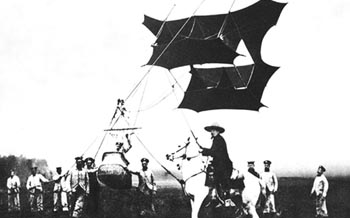 S.F. Cody download a 750pixel image
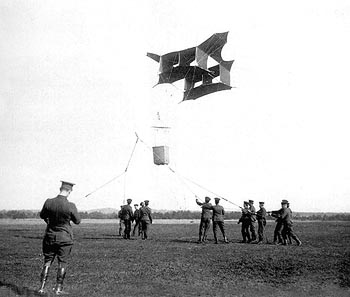 S.F. Cody download a 750pixel image
 Lela Cody, aloft
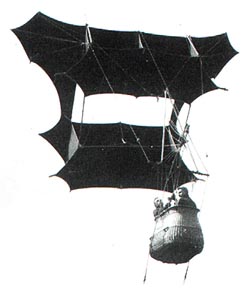 S.F. Cody? and ?, aloft
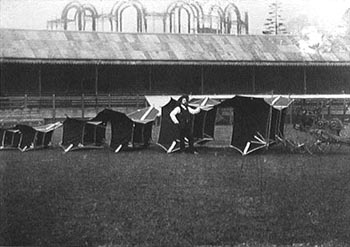 S.F. Cody and kite train
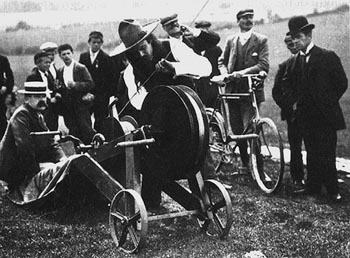 S.F. Cody and winch http://www.design-technology.org download a 750pixel image
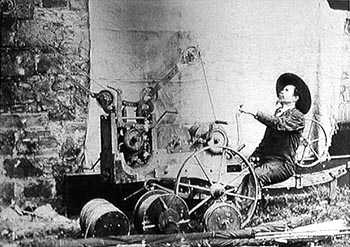 S.F. Cody and winch
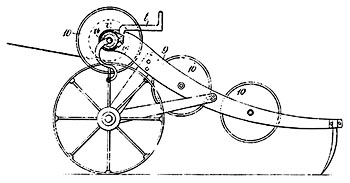 S.F. Cody, winch, diagram http://www.design-technology.org
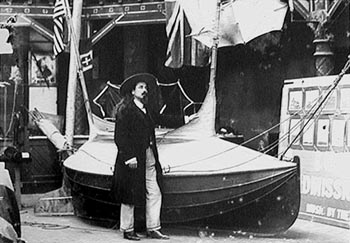 S.F. Cody, kiteboat
Airships
 S.F. Cody, Nulli Secundus I
"Meanwhile the Government balloon factory at Farnborough began airship construction in 1907; Colonel Capper, R.E., and S. F. Cody were jointly concerned in the production of a semi-rigid [to be known as "Nulli Secundus I"]. Fifteen thicknesses of goldbeaters' skin--about the most expensive covering obtainable--were used for the envelope, which was 25 feet in diameter. A slight shower of rain in which the airship was caught led to its wreckage, owing to the absorbent quality of the goldbeaters' skin, whereupon Capper and Cody set to work to reproduce the airship and its defects on a larger scale."
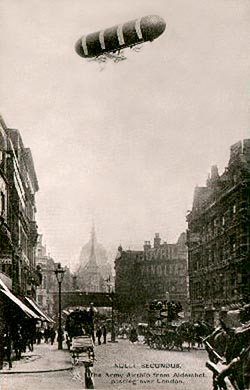 S.F. Cody, Nulli Secundus I Possibly? a fanciful (doctored) image of what the 'Nulli Secundus I' might have looked like in flight. download a 500pixel image
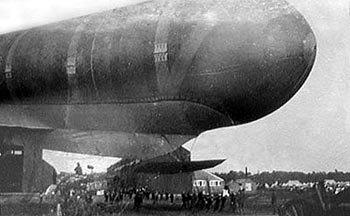 S.F. Cody, Nulli Secundus II
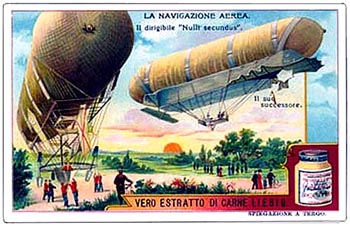 Nulli Secundus I and II, 'Liebig' trade card, 1911
"'Nulli Secundus II.' was fitted with a 100 horse-power engine and had an envelope of 42 feet in diameter, the goldbeaters' skin being covered in fabric and the car being suspended by four bands which encircled the balloon envelope. In October of 1907, 'Nulli Secundus II.' made a trial flight from Farnborough to London and was anchored at the Crystal Palace. The wind sprung up and took the vessel away from its mooring ropes, wrecking it after the one flight."
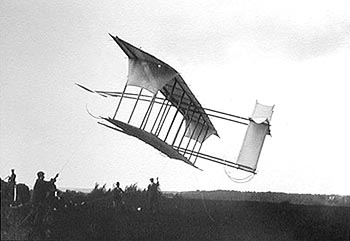 S.F. Cody, Glider flown as a kite
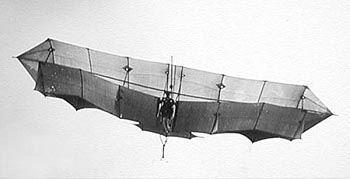 S.F. Cody, man carrying glider
Powered Gliders, Aeroplanes For an understanding of this era of Cody's work the pages by Jean Roberts are a great start.
 S.F. Cody, 1A, 1908 Samuel F. Cody makes the first official powered flight in Britain, Laffans Plain, Aldershot, 5 Oct 1908. The flight covered a distance of 500 yards download a 750pixel image
http://invention.psychology.msstate.edu Originally appeared in Scientific American, 100, January 30, 1909, p. 96. After carrying on a series of experiments last September and October, the aeroplane designed by Capt. S. F. Cody, of the British Aeronautical Corps, was remodeled and has lately been given some further trials. As first designed, this machine was similar to the present aeroplane. The dimensions of the planes were 40 feet long by 7 1/2 feet wide, and they were spaced 8 feet apart. Movable wing tips were arranged at the ends of the lower planes, the horizontal rudder being placed in front and the triangular vertical rudder at the rear. There was also a small triangular vertical surface above the main plane at the center. The flights made by this machine were 304 feet on September 29, 200 feet at 10 feet elevation on October 14, and 1,200 feet at 30 feet elevation in 27 seconds on October 16. In the last flight the machine tipped to one side and was smashed when it struck the ground.
 S.F. Colonel 'Coddy', The British Army Aeroplane download a 1000pixel or 1500pixel image
Note the vertical rudders in the front and rear, the propellers at the front edge, and the vertical gasoline tank and radiator between the planes at the center and toward the rear. The flag and streamers show the direction of the wind. The New Aeroplane of the British Army Aeronautical Corps The planes of the new machine are about one-third longer than those of the old one, and the total weight of the machine is some 1,500 pounds. The same 50 horse-power 8-cylinder Antoinette motor is used. It is placed at the front of the lower plane in the center, and drives two peculiar propellers located each about 4 feet on either side of it at the front edge, by means of chains. The movable wing tips have been placed beside the horizontal rudder, so that they are practically extensions of it. One of these turns upward and the other downward when the steering column is swung from one side to the other, while a forward and backward motion of the steering column turns the horizontal rudder. The vertical rudder is placed at the rear as before, and is worked by turning the steering wheel. The 3-gallon gasoline tank is placed above the motor, and the radiator is located vertically behind the aviator's seat, which is back of the motor. The motor is mounted upon a substantial chassis and strong springs are interposed between this chassis and the axles of the running gear for the purpose of absorbing the shock when the machine strikes the ground. The movable tips at each end of the horizontal rudder, the motor and propellers, the three-wheeled chassis with buffer wheel in front, are all visible in this photograph. The most notable feature of this aeroplane is found in the two propellers. These are of a peculiar type similar to that described in the SUPPLEMENT of December 19,1908, by Mr. Sidney H. Hollands. The peculiar feature is that the blades are broader at their base than at their ends, the width at the base being 24 inches, and the width at the outer end being but 5 inches. The length of the blades is about 3 feet. They are made of aluminium and are curved somewhat like a sugar scoop. Each one is mounted on a strong piece of steel tubing. Mr. Cody, as well as Mr. Hollands, both claim to have found that a blade of this shape gives better results than the usual form of blade, which is narrower at the base than at the tip. It is only in this respect that Mr. Hollands' propeller resembles that used by Mr. Cody on the British army aeroplane. In a letter to English Aeronautics Mr. Hollands describes his propeller (with which he claims to have obtained a thrust of 26 pounds per horse-power) as having two...
"narrow-tipped blades of a special conchoidal (or irregular crescent-shape) cross-section, set to pitch-angles of maximum efficiency. These angles, together with the other foregoing essential features, were all separately determined by a long and careful series of comparative experiments. The blades have a twist, and the pitch is 0.7 of the diameter. It is most efficient at high speeds (the driving torque being relatively very small), and the essential features of the design lend themselves to strength and rigidity. It is constructed wholly of high-grade steel, and the 2 meters diameter type weighs 13 pounds, with a factor of safety of six, at 1,200 revolutions per minute."Mr. Hollands claims that his propeller is superior to those used on the army aeroplane and that it was designed some years before the propellers of Mr. Cody. According to a cable report, the first test of the remodeled aeroplane occurred on the 20th instant. Two short flights were made by Capt. Cody successfully, but the third one was terminated, after the machine had traveled some 300 feet at a height of about 20 feet from the ground, by the buckling of the horizontal rudder, and the aeroplane fell heavily and was badly wrecked.
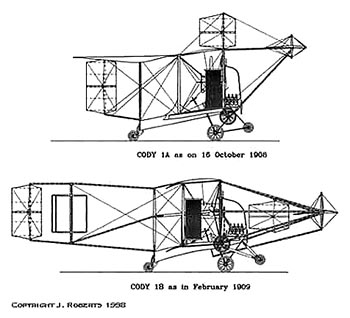 S.F. Cody, 3views, Cody IA (1908) and IB (1909)
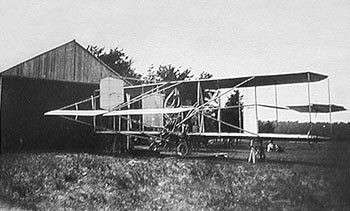 S.F. Cody, 1B, 1909
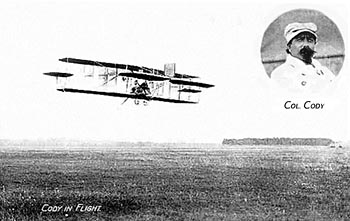 S.F. Cody, 1B, 1909
 S.F. Cody, 1B, 1909 http://www.design-technology.org download a 750pixel image
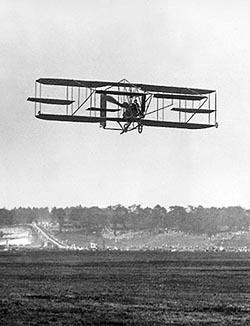 S.F. Cody, 1C 'Cathedral', 1909 download a 750pixel image
 S.F. Cody, 1C 'Cathedral', 1909 download a 1000pixel image
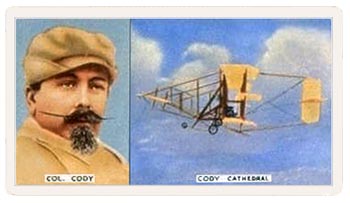 S.F. 'Col.' Cody, 1C 'Cathedral', 1909
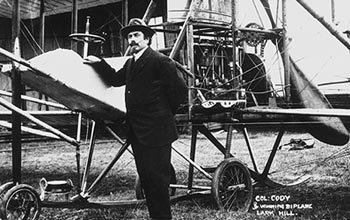 S.F. Cody, 'Lark Hill', 1912 (model no. to be established) http://www.sciencemuseum.org.uk
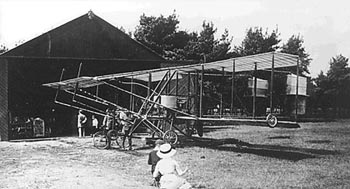 S.F. Cody (model no. to be established)
 S.F. Cody at Brooklands
 S.F. Cody
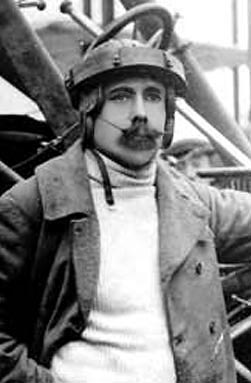 S.F. Cody, 1908
 S.F. Cody, 1908
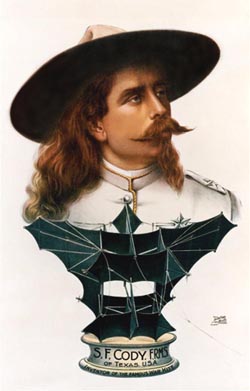 S.F. Cody : The Poster download a 500pixel image
|
© Copyright 1999-2002 CTIE - All Rights Reserved - Caution |
